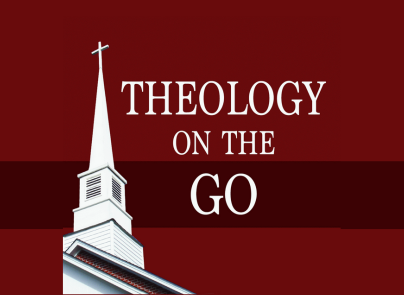Sacred Bond

December 17, 2012
 Sacred Bond, Michael G. Brown and Zach Keele (Reformed Fellowship, 2012)
Sometimes I feel like some of my family and friends start tuning out when I begin throwing the “covenant” word around. It isn’t one that the Baptist churches I grew up in used very often. The lingo sounds kind of strange to those who aren’t accustomed to it, and yet it is the framework of God’s dealings with his people. Learning about the covenant God has made within the Trinity, and then throughout history with mankind and his church has helped me to understand both Scripture and my relationship with the Lord more clearly. So I talk about it too much.
Sacred Bond is the most concise book I have read explaining the basic structure of covenant theology. Everyone needs a copy.
Our God is a God who promises. And he is a God who keeps his promises. Some of his promises are unconditional, and some are conditional on the performance of the other party. Brown and Keel do a great job of illustrating the importance of promises to a relationship in their first chapter, What is Covenant Theology and Why Should I Care?
Sacred Bond, Michael G. Brown and Zach Keele (Reformed Fellowship, 2012)
Sometimes I feel like some of my family and friends start tuning out when I begin throwing the “covenant” word around. It isn’t one that the Baptist churches I grew up in used very often. The lingo sounds kind of strange to those who aren’t accustomed to it, and yet it is the framework of God’s dealings with his people. Learning about the covenant God has made within the Trinity, and then throughout history with mankind and his church has helped me to understand both Scripture and my relationship with the Lord more clearly. So I talk about it too much.
Sacred Bond is the most concise book I have read explaining the basic structure of covenant theology. Everyone needs a copy.
Our God is a God who promises. And he is a God who keeps his promises. Some of his promises are unconditional, and some are conditional on the performance of the other party. Brown and Keel do a great job of illustrating the importance of promises to a relationship in their first chapter, What is Covenant Theology and Why Should I Care?
The basic building blocks of covenant, therefore, are found every time one promises to do something for someone else with the implied positive and negative consequences determined by the cultural and relational context. The promise creates a relationship. It is a commitment with implied sanctions, like in those old western films when the cowboy says, “A man’s word is law around here.” Speaking creates commitments; our words bind us to actions and to other people (12).Covenants aren’t just made between God and man. They are part of every relationship. God created us this way and he relates to us this way. When Moses wrote the beginning books of the Bible, the people of Israel were already familiar with the covenant language that saturates it because they already lived in a culture where these covenants between a suzerain king and lesser vassals were common. In fact, the Holy Spirit led Moses to write this historical narrative after God had initiated the covenant at Sinai. So they are not only familiar with covenant language, but they are in a covenant relationship with God themselves. They should see then that man cannot obey God and therefore stay in his presence. But the people of Israel should also recognize that the Mosaic covenant given at Sinai points to Someone who can, the Promised Seed announced as soon as Adam broke his covenant with God. Brown and Keele define a covenant as “a solemn agreement with oaths and/or promises, which imply certain sanctions or legality…God’s purpose in history is to govern his kingdom of creation and bring forth his holy kingdom. His covenants, therefore, are the way that God administers his kingdom.” (17, 18). Each following chapter describes the main covenants God has revealed in Scripture, starting with the intratrinitarian covenant of redemption made in eternity. They are well executed with a description of each covenant, what the Bible teaches about this covenant in both the Old and New Testaments, and why it is important to the Christian life. I was amazed how thoroughly they pulled this off in such little space. If you are curious to what these covenants are, let me give you the breakdown. After the covenant of redemption there is the covenant of works, the covenant of grace, the common grace covenant (Noah), the Abrahamic covenant, the Mosaic covenant, the Davidic covenant, and the new covenant. The authors manage to teach all of this, along with a glossary of terms, a Scripture index, and name index in 165 pages. A.ma.zing. If you want to understand your Bible better, read this book. The authors glorify God by teaching his promises to which we can hold fast. We may break our promises, but God was pleased to make a covenant with his people, and then fulfill the full sanctions of that oath. He delivered his righteousness in Christ, as well as bore the curse of the covenant-breakers. Soli Deo gloria!




